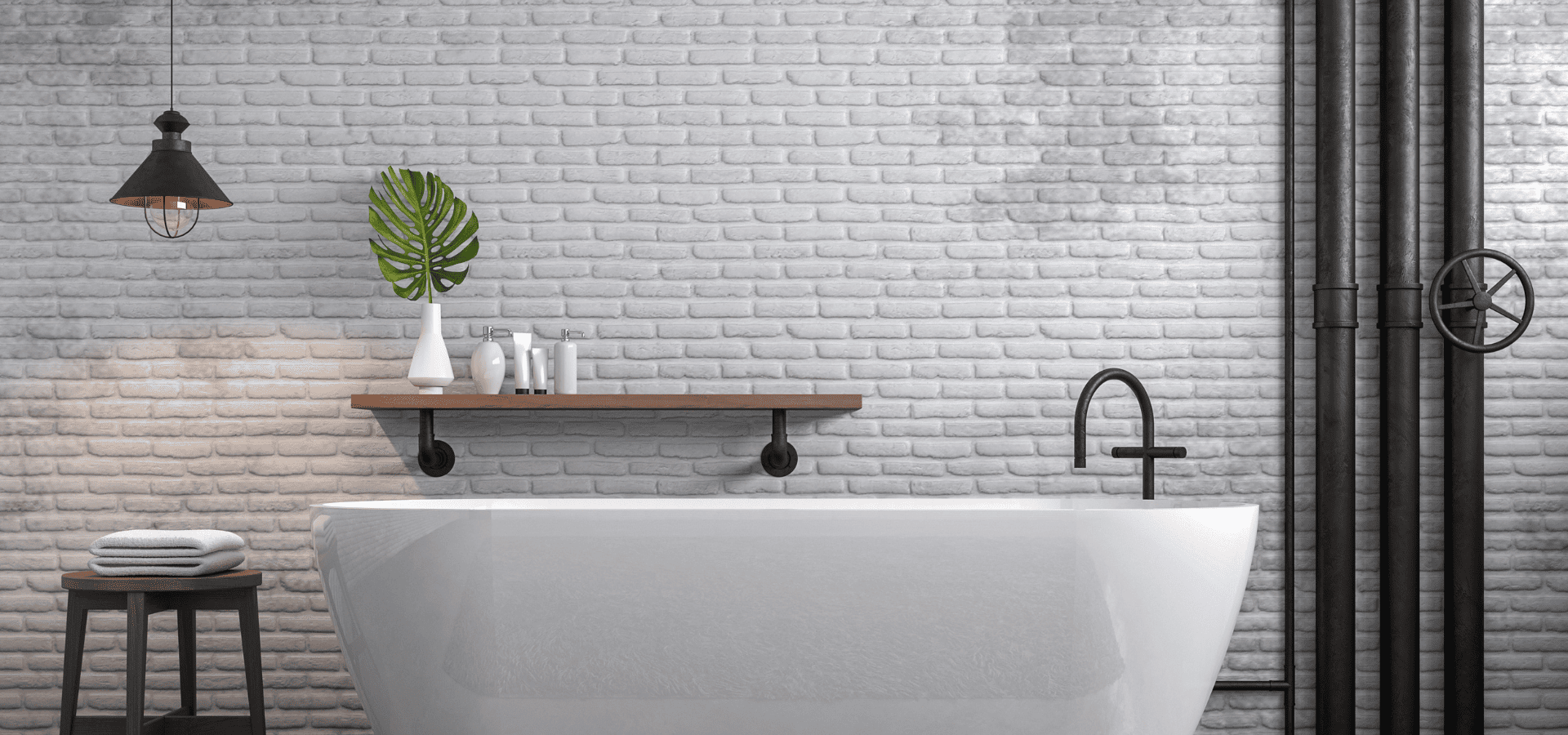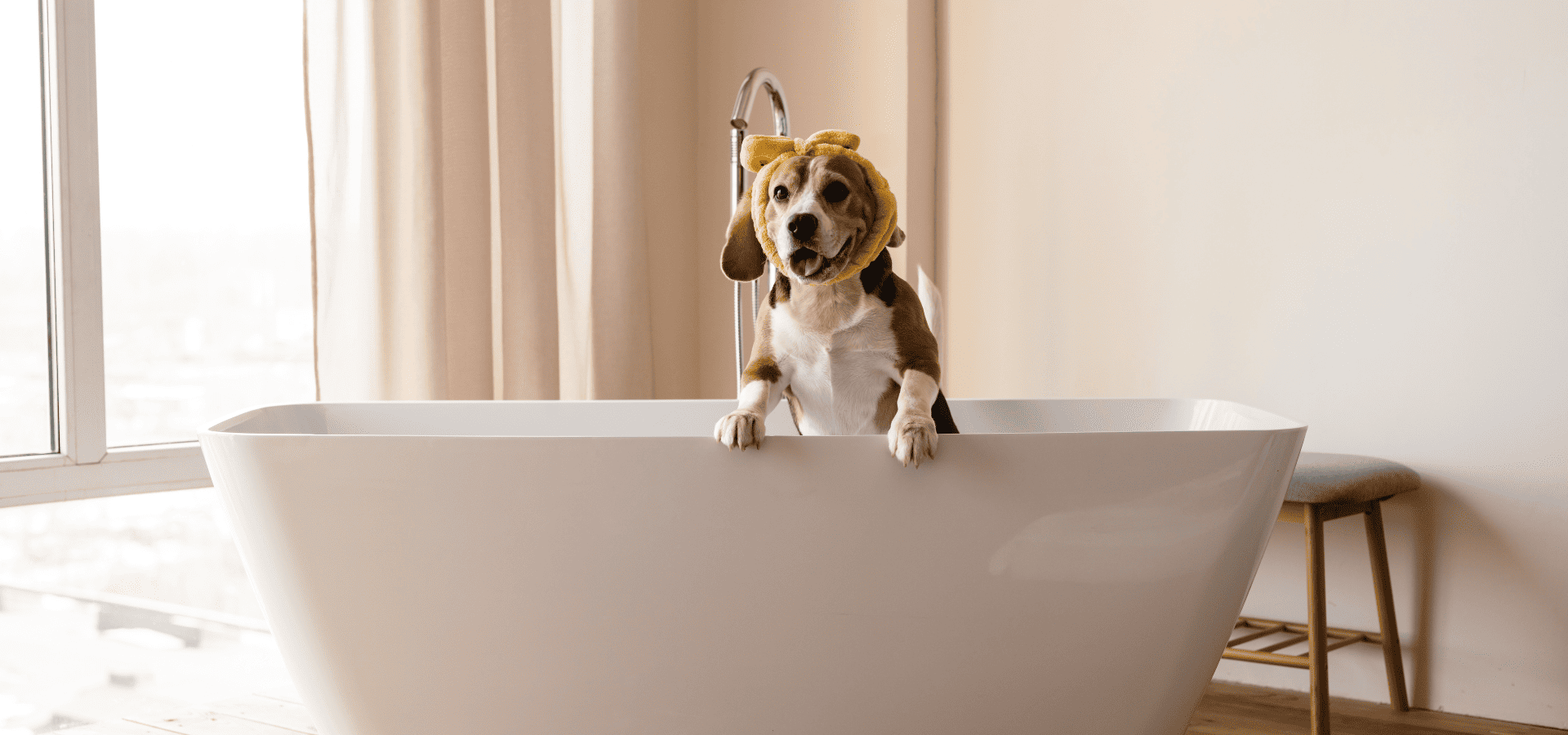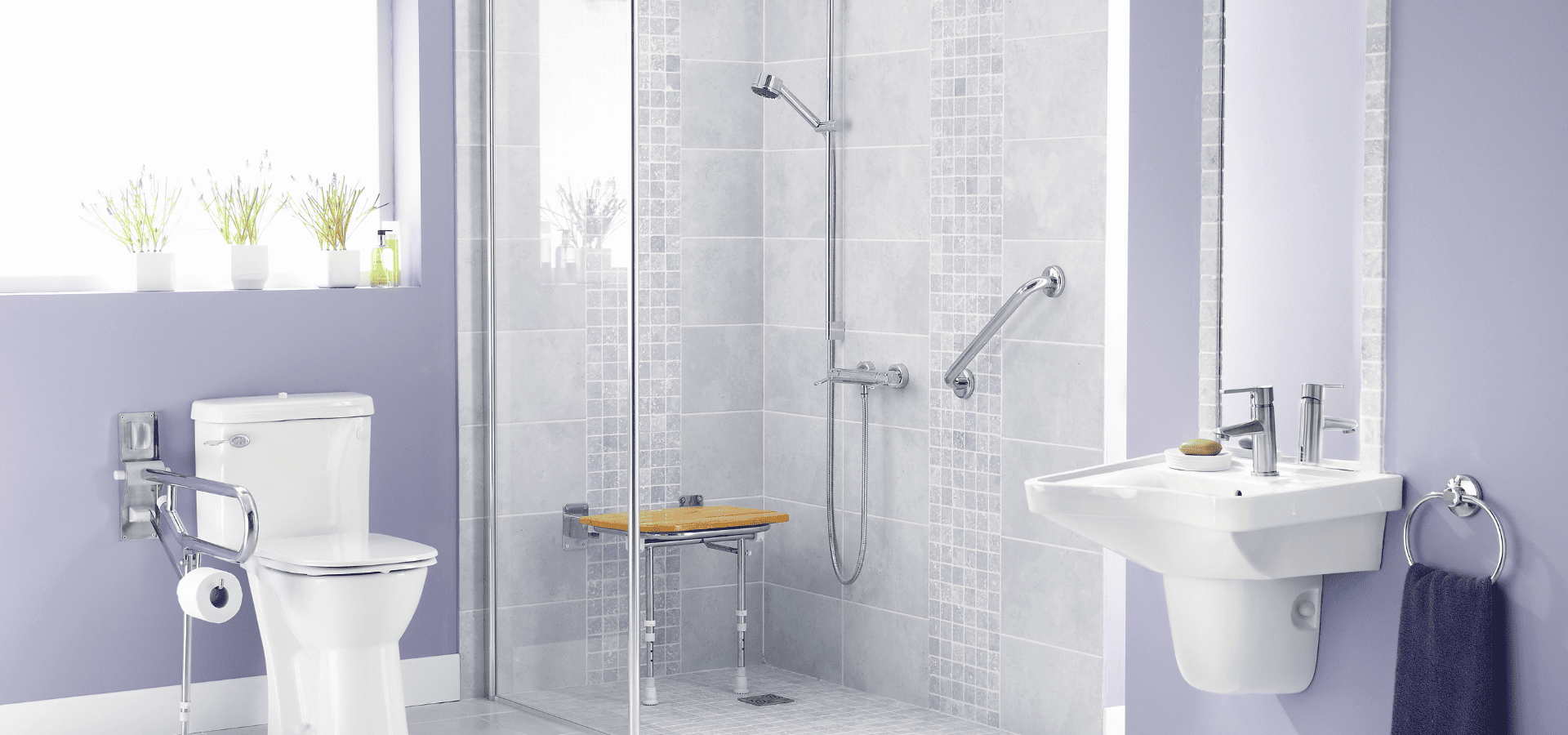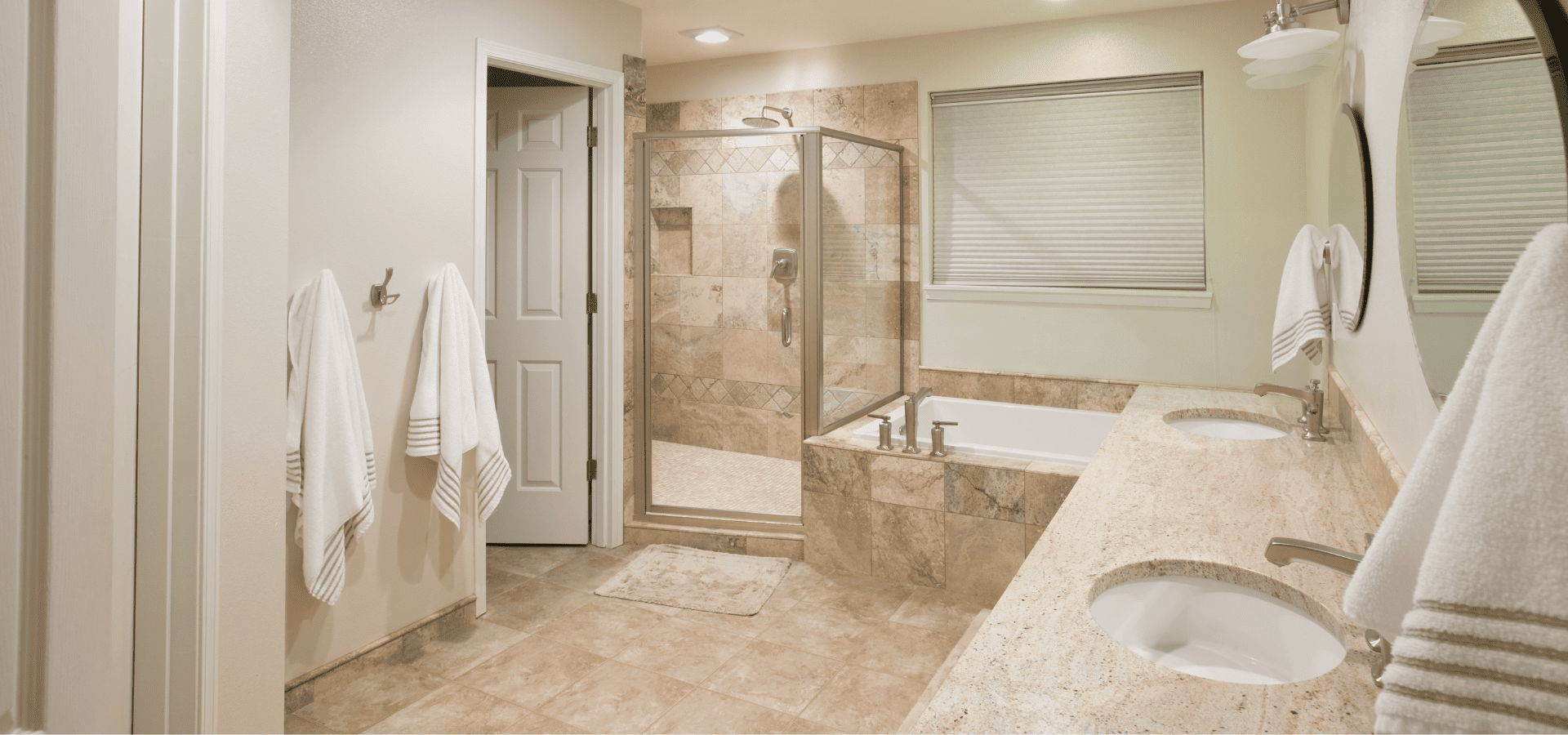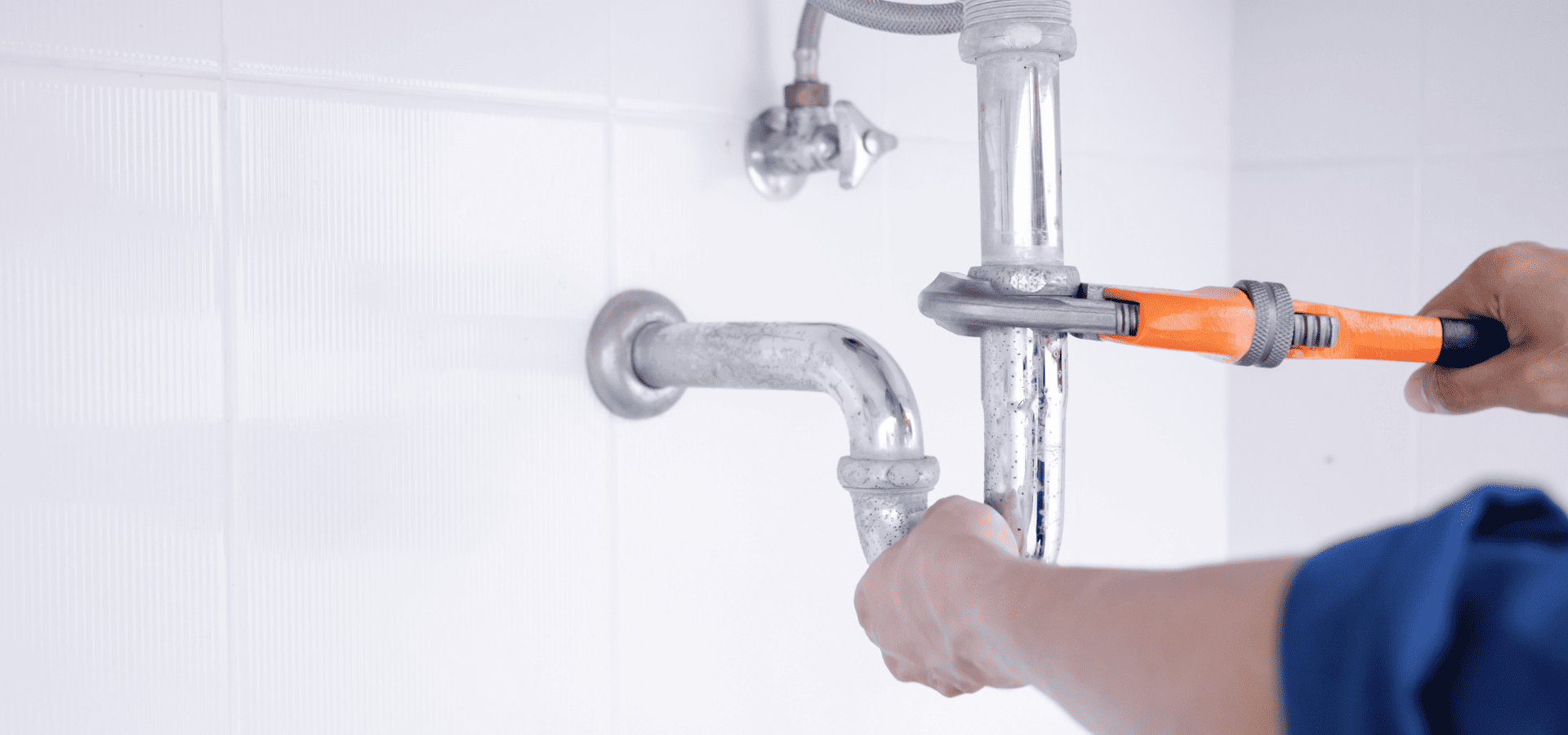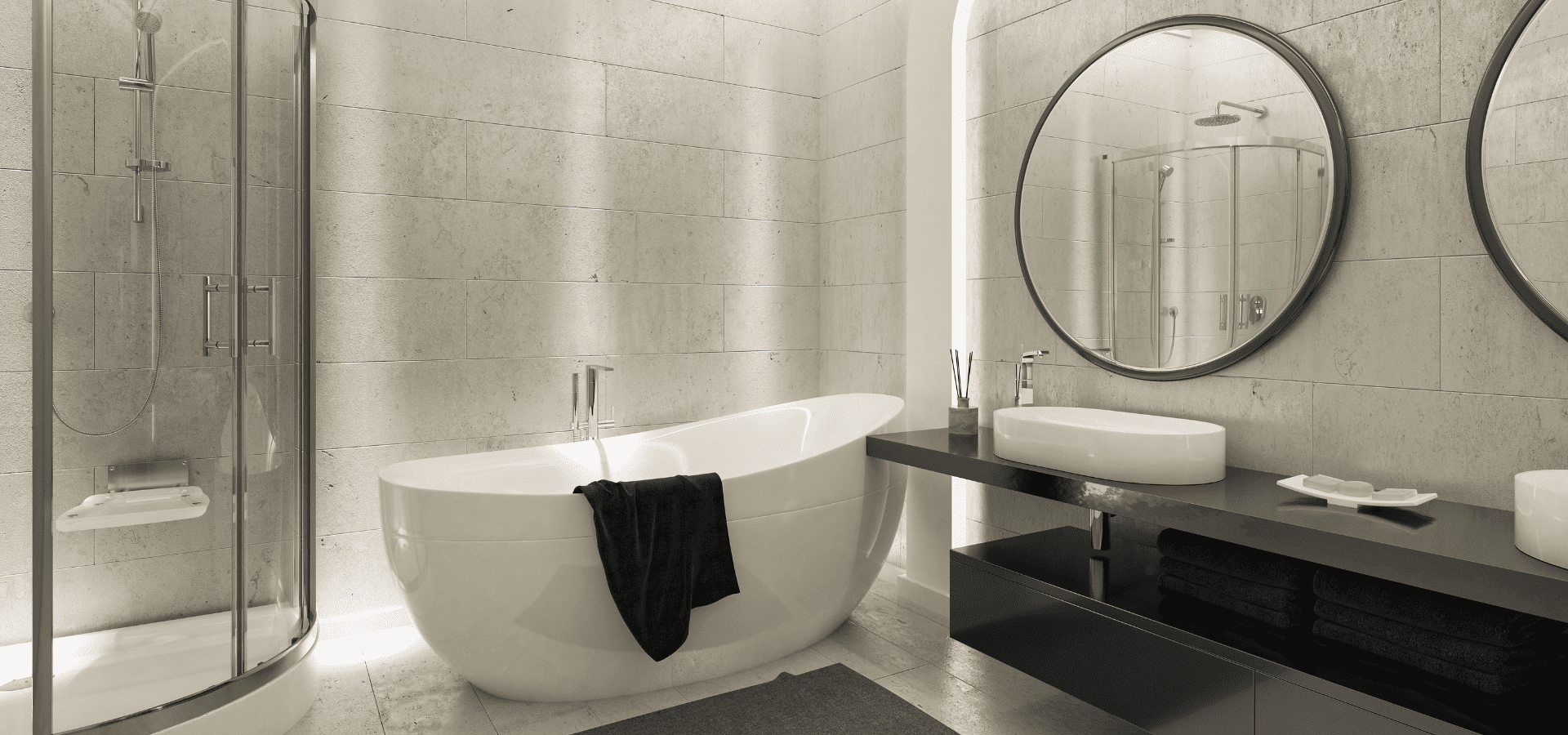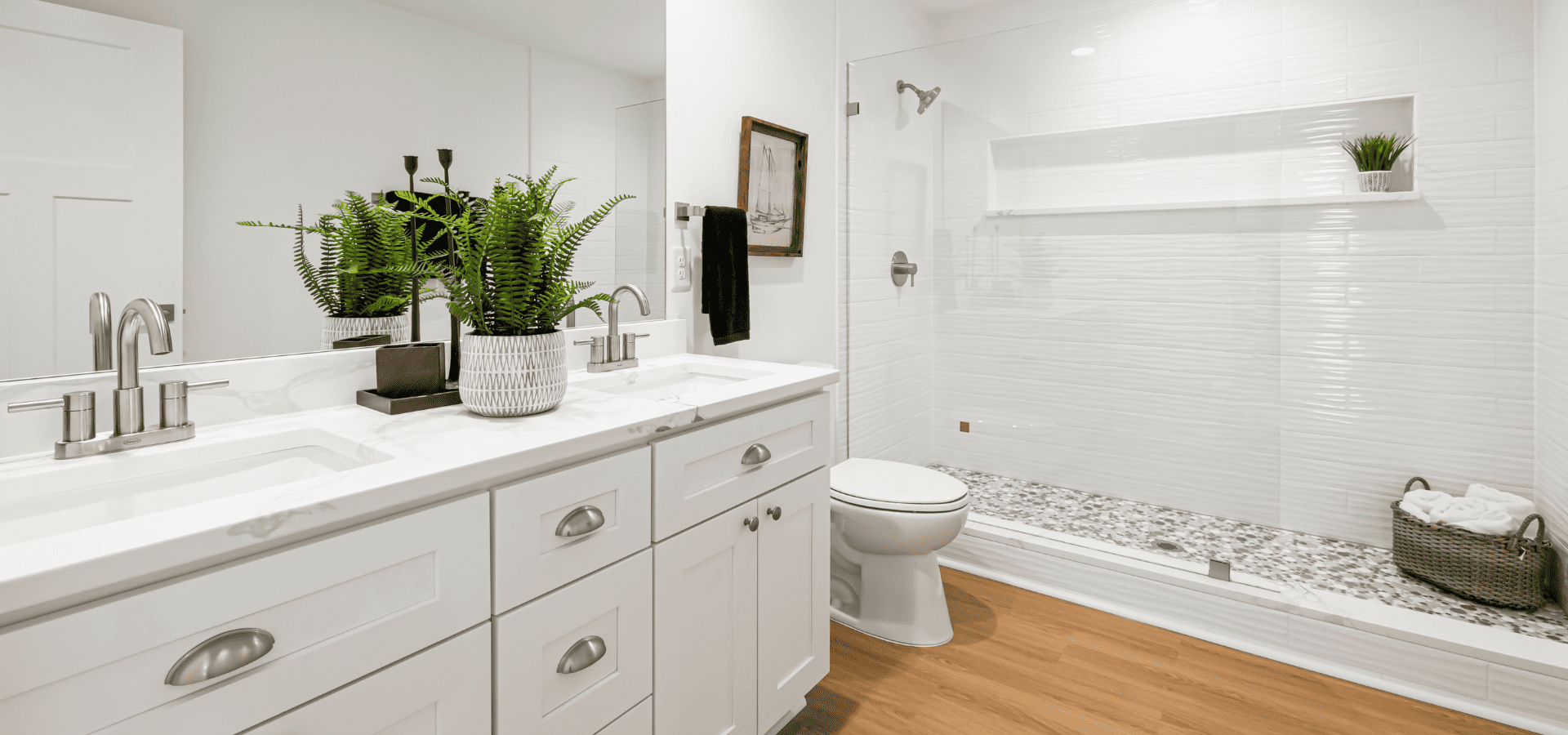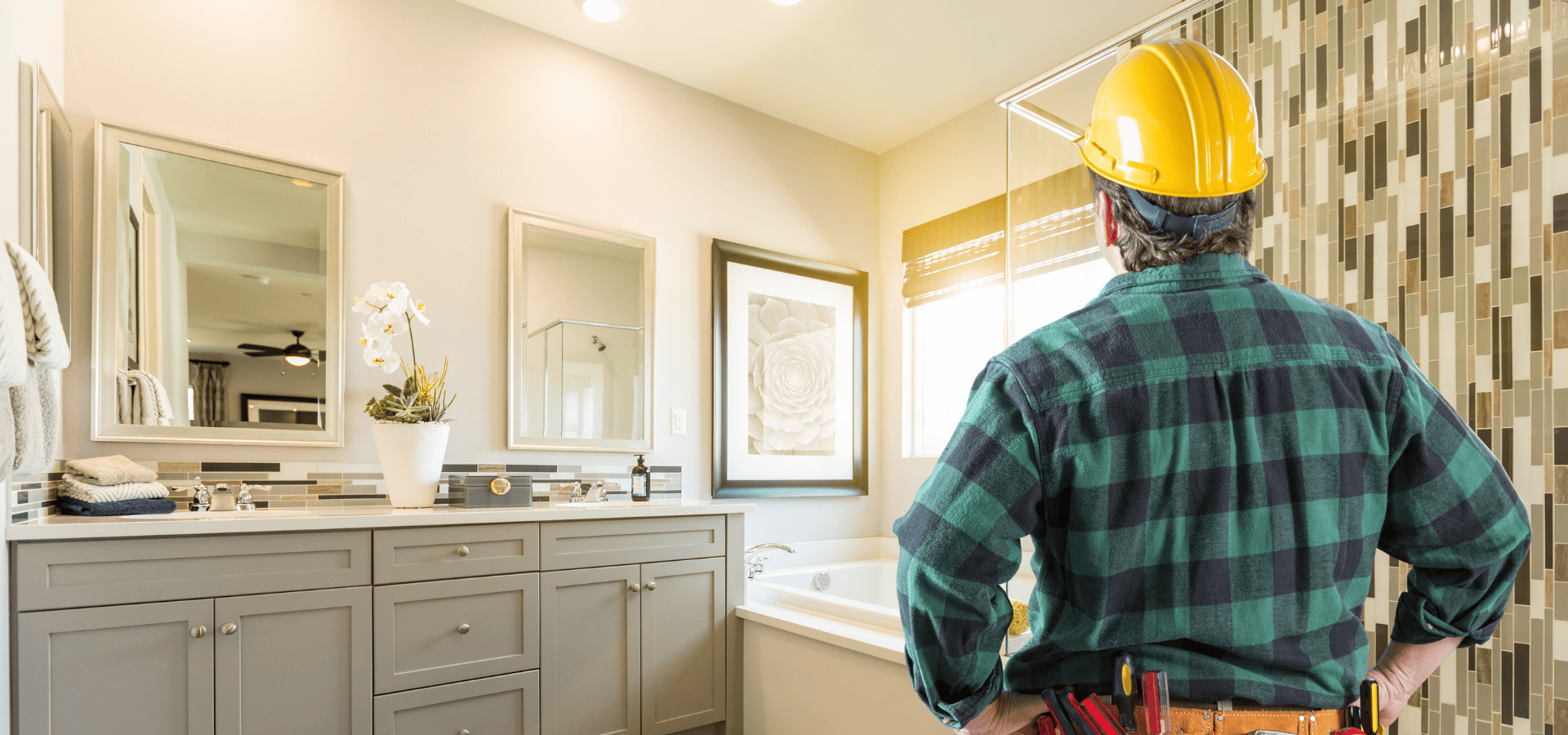Luxury Bathroom Remodeling Expert Guide
When you hear luxury bathroom remodels, what comes to your mind?
Marble tiles, freestanding tubs, and double vanities are just a few of the usual suspects.
Those are the main features that people are familiar with, and that's no surprise given that they take up the bulk of the space.
It goes without saying though, that there are many smaller details that work together with these larger features to give you a cohesive luxury bathroom.
To make your luxury bath remodel a success, you need to know how to choose the right elements and make them come together cohesively.
And knowing your options is key to making the right choices.
So in this guide, we'll be going through the various features and elements available for luxury bathrooms.
First Things First: Budget Carefully
Imagine a luxurious bathroom with granite tiles, a freestanding bathtub — and a tiny toilet.
Doesn't feel quite right, does it?
Well, that's probably what's going to happen if you don't plan properly and end up running out of money halfway after splurging on the tiles and bathtub.
Some homeowners like to just set a number that they think is enough to cover the project and start on it, thinking that just because they've set aside a large sum, it should be enough.
It could be, but it could also be not enough. Without detailing your various expenses, there's just no way to know, especially if unexpected costs pop up, like hidden damages that you discovered.
Just setting aside a large number isn't enough.
For example, $50k is a relatively high price to pay for a bathroom remodel, right? So it should be enough as long as you’re not spending on super luxurious items like hydrotherapy bathtubs, right?
Wrong.
Even basic luxury bathroom remodels can go up to $50k, and that’s assuming you’re not touching the plumbing and sticking to the lower spectrum of higher-end features and elements.
If you’re planning on premium features like custom vanities and a full redesign of your bathroom, you’ll easily blow through $50k.
If you’re wondering, “How much is enough then?”, the answer is that it really depends. It depends on the features you’re using, the materials you opt for, whether you’re moving the plumbing, and how much of your bathroom you’re changing.
Some bathroom remodels can even go up to more than $100k or even several hundred thousand dollars.
That’s why it’s so important to properly note down all your expenses. You’ll have a clearer idea of how much to set aside or whether you need to cut down on certain spendings.
Having a clear plan also allows you to easily move expenses around and helps you decide what to prioritize in the event that you don’t have enough funds for the remodel that you want.
Don’t forget to also factor in a buffer of 10-20% for unexpected expenses such as hidden damages that you may uncover.
1. Materials And Finishes
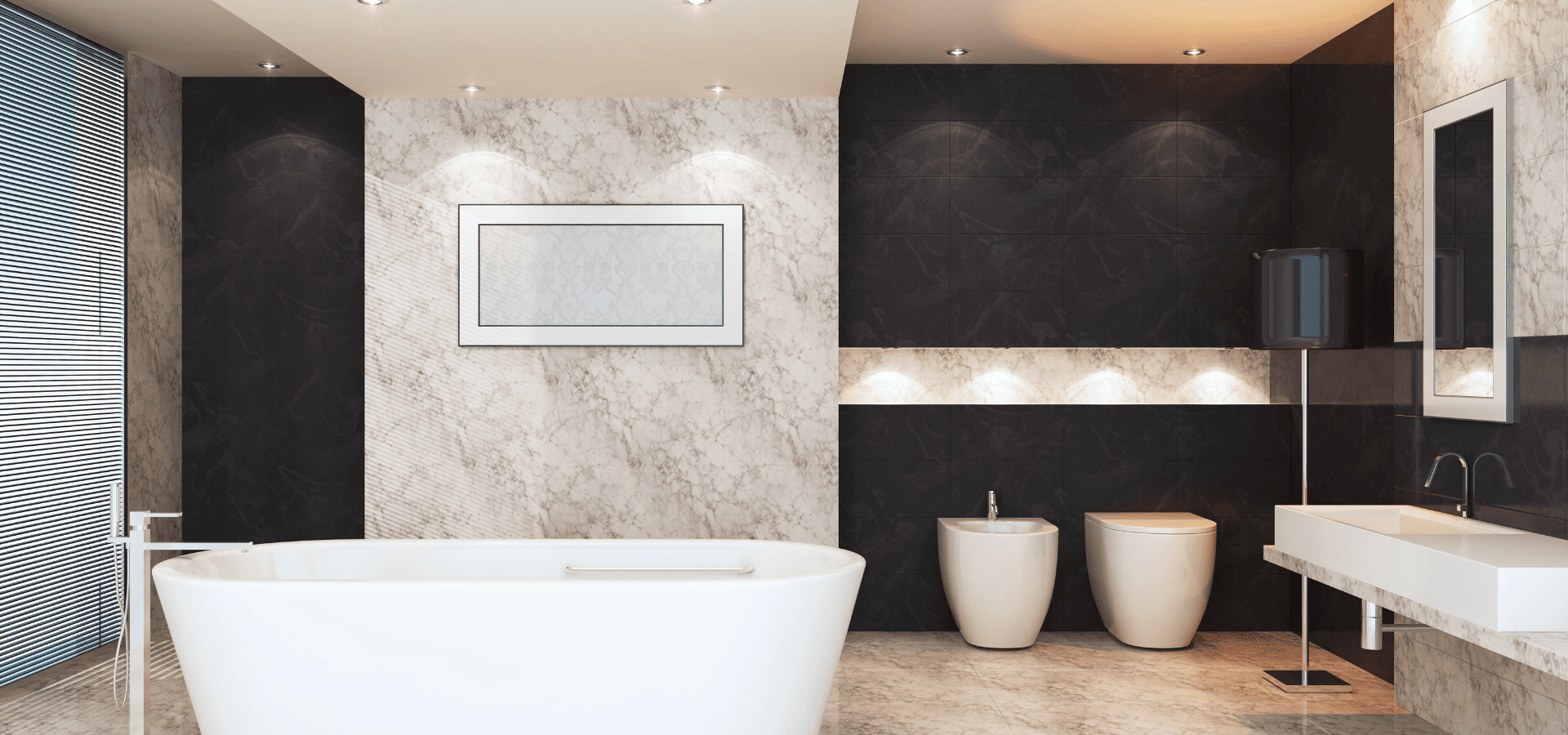
Your bathroom floor and walls take up the most surface area of any other component in your bathroom, so needless to say, the material you choose for them is going to set the tone for your bathroom.
It’s not just the material of the floor and wall tiles of course, there’s also the material for your fixtures like your sink, your bathroom, and so on. But the biggest difference maker is going to be the material of your flooring and walls.
For your flooring and walls, the best materials are going to be natural stones like marble, travertine, granite, quartzite, and so on. Natural stones bring a timeless natural beauty and depth unmatched by other materials, and their high costs and exclusivity further add to their allure.
If you’re trying to keep your expenses down, a great alternative to natural stones is porcelain. Porcelain can mimic the look of natural stones better than other materials and is durable and long-lasting, making it a great choice if you’re on a budget.
It can’t fully recreate the beauty and depth of natural stones, but it can get very close to it, closer than any other material that’s not natural stone itself can.
As for your other elements, i.e. your fixtures and the smaller features on them like the faucet or door knobs, for certain elements, it can be quite standard, such as acrylic for bathtubs and glazed porcelain for toilets.
Even for those relatively standard elements, there are still ways you can customize their designs though. These include making your bathroom sink the same material as your walls and floor, and opting for drop-in tubs so that more of your bathtub is the same material as your floor and walls.
And for the other elements, eg the faucet, the door knob, the frame of the mirror, cabinet handles, towel bars, and so on, there’s also a variety of materials and finishes you can use to elevate the look of your bathroom and further bring out that luxury vibe.
Some examples include polished nickel, brushed brass, matte black, and oil-rubbed bronze. Just make sure that they’ll complement the material you’re using for your walls and floor.
2. Fixtures
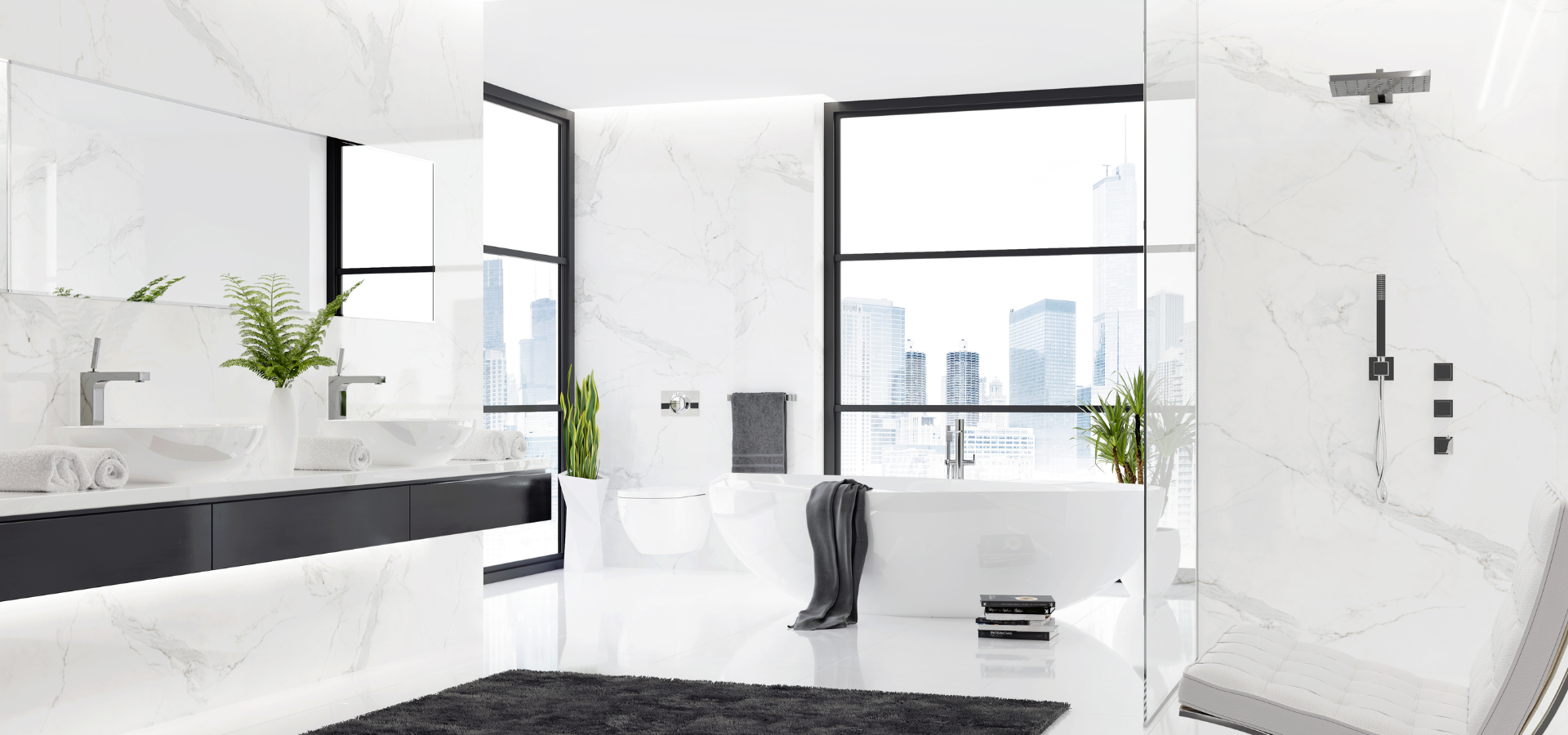
Now, we’ll be going over the best options for each type of fixture when you’re going about a luxury remodel of your bathroom.
The Bathtub
There are many kinds of bathtubs, and in truth, even a normal bathtub wouldn’t really hinder the aesthetics of your luxury bathroom.
Bathtubs don’t look too different across the various types. The differences are mainly in their functionality and installation, not aesthetics. Just don’t go for cheap ones that obviously look cheap, such as cheap finishes or very thin acrylic.
That said, if you’re aiming for a luxury bathroom that’s a cut above the rest, you’ll want there to be something special about your bathtub. Freestanding bathtubs are already considered luxurious, but if you want to distinguish your bathroom from the rest, ideally, it should be something less commonly seen.
This means hydrotherapy tubs, whirlpool tubs, Japanese-style soaking tubs, stone resin tubs, or even glass tubs.
The Shower
For your shower, the material of the floor should be the same as the rest of your flooring, so not much to explain there.
It’s what’s inside the shower and the enclosure that’s going to separate a normal shower from a high-end one.
For the enclosure, there isn't too much you can do besides making it as minimalist as possible to create a sleek, modern design.
Trying to do too much with complicated or grand designs usually only ends up making your overall design less classy.
Your enclosure isn't meant to command attention, so don't try to do so. Instead, opt for minimalist frameless glass enclosures.
Now, for the inside of your shower, since it's a luxury bathroom, the goal is maximum enjoyment and indulgence.
This means technology and features that make your shower as comfortable, convenient, and enjoyable as possible, and perhaps even introduce a sense of opulence.
Some examples include multiple showerheads, body sprays, built-in seating, temperature control systems, or even steam showers.
The Vanity
Like with bathtubs, truly luxurious bathrooms usually have something that sets their vanity apart from others.
A large double vanity would look right at home in a luxury bathroom, but if you want to distinguish your bathroom from other luxury baths, you'll want to incorporate a custom vanity.
You can customize your vanity with a stone countertop made of marble, granite, and so on, or make your faucet brass gold, or even make your sink the same material as your stone countertop.
The point is, there are many ways to customize even your vanity to make it stand out.
The Toilet
There aren't too many ways you can change up the design and aesthetics of your toilet.
Like with your shower enclosure, your best option is to go with a clean, minimalist look.
Functionality is a different matter though. There are quite a few practical modifications and upgrades you can make to your toilet.
These include wall-mounting it for more floor space, soft-close lids so there's no slamming, or even getting a full-on smart toilet with functions like seat warming, automatic bidet, and so on.
3. (Smart) Technology
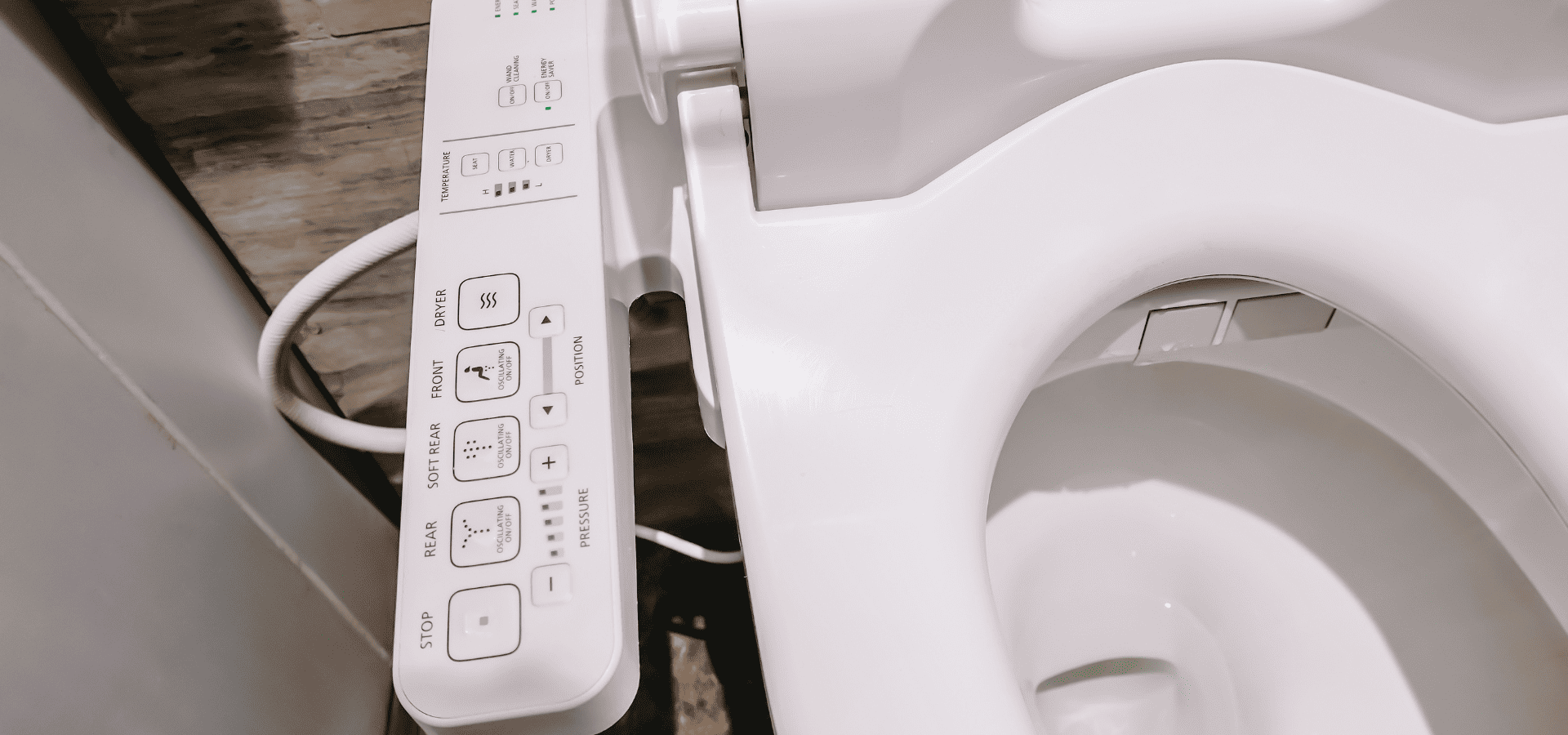
Finally, luxury bathrooms shouldn't just look the part, but they should also actually make your life better and more comfortable.
That's where
modern technology comes in.
To be fair, even in luxury bathrooms nowadays, it's not often that you see advanced technology, simply because it's really not something that people need or even know about.
Nonetheless, they can seriously enhance your comfort, so if you're looking for ways to make your bathroom as luxurious as possible, this is it.
For those who don't know what technology is available, here's what you're missing out on.
- Smart lighting: App-controllable brightness settings allow you to set the brightness to your desired comfort level. Motion sensor lights enhance convenience as you won't have to manually flip a switch each time.
- Smart toilets: We already went through this earlier, but with smart toilets, you can enjoy features like heated seats, deodorizers, and even bidets that can wash your rear for you automatically.
- Smart mirrors: Yes, you read that right. There are even smart mirrors nowadays. They have anti-fog features, built-in Bluetooth speakers, and even touch lighting controls and weather or news displays. This allows you to see useful information when you're brushing your teeth or doing your facial care.
- Smart showers: Advanced shower systems allow you to not just control the exact temperature of the water, but also control it with your voice.
- Floor heating: Lastly, one of the best feelings is stepping onto a warm floor during chilly mornings, and with floor heating, that's exactly what you'll get.
None of these features are essential in any way at all. If anything, they're indulgences.
But that's exactly what a luxury bathroom is meant to be–indulgent.
Ending Off
By now, you should have gotten the gist of luxury bathrooms.
You don't need any of the elements… but once you have them, you'll never go back.
Before we end off, just one last tip–make sure your bathroom is brightly lit.
Poor lighting can easily ruin even the most well-designed bathrooms by making the features hard to see clearly. They also make even large spaces feel small.
So make sure to use bright LED lights. That's the final piece of the puzzle.
With all the right fixtures, materials, and technology, you'll have yourself the bathroom of your dreams as long as it's brightly lit.
And don't forget to engage a first-rate bathroom remodel contractor like
Denver Bathroom Pros. You'll be investing a lot into a luxury bathroom remodel, so you definitely don't want to hire less established companies who might screw it up.
More From Us

